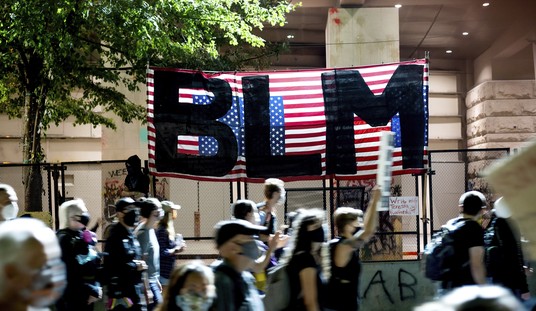Did the Schumer Shutdown hide an economic revival? Or more importantly, did it kill one?
The Bureau of Labor Statistics got furloughed at the very beginning of the shutdown, and today announced that we will never have jobs data for the month of October. We may not see full data for November either, depending on how fast BLS managed to restart its large-scale surveys of American workers and businesses. However, BLS had completed its survey work in September before the shutdown stopped them from reporting the results. The US added 119,000 jobs in September after a poor summer of job creation, far exceeding expectations:
Total nonfarm payroll employment edged up by 119,000 in September but has shown little change since April, the U.S. Bureau of Labor Statistics reported today. The unemployment rate, at 4.4 percent, changed little in September. Employment continued to trend up in health care, food services and drinking places, and social assistance. Job losses occurred in transportation and warehousing and in federal government. ...
Both the unemployment rate, at 4.4 percent, and the number of unemployed people, at 7.6 million, changed little in September. These measures are higher than a year earlier, when the jobless rate was 4.1 percent, and the number of unemployed people was 6.9 million.
Normally, a BLS report of 119,000 added jobs in a month would generate shrugs rather than cheers. Before the pandemic, 119K would barely have been a maintenance level in relation to population growth and labor-force participation rates (LFPR). The latter, at least, still looks pretty stable:
The labor force participation rate, at 62.4 percent, changed little over the month and over the year. The employment-population ratio, at 59.7 percent, also changed little in September but was down by 0.4 percentage point over the year.
The variable in question is population growth – and it's critical in assessing the meaning of this number. The thumbnail calculation before the pandemic was growth of roughly 2 million per year, and that at ~60% LFPR, you need 1.2 million jobs just to keep up, and therefore at least 100,000 per month, or at least that at an average. If those assumptions still hold, then 119,000 jobs added in a month is barely treading water. If, however, population growth drops significantly, then the maintenance level drops as well.
That brings us to one point made by Washington Post economic reporter Heather Long, a reliable analyst. In her assessment of today's report, Long takes a more pessimistic view, but considers the summer average of 44K/month to be "barely treading water":
The jobs report shows a labor market that was really weak this summer and didn't improve much in September.
— Heather Long (@byHeatherLong) November 20, 2025
1) Unemployment rate is now 4.4% -->Highest since October 2021.
2) 75% of jobs gains were in just 2 sectors: healthcare and hospitality
3) Many key industries are doing… pic.twitter.com/dPjbgCqpoY
4) July & August revised down by -33,000. (August ended up being -4,000)
5) The unemployment rate ticked up b/c more people looked for jobs in September. About half found work, but half are unemployed.
Bottom line: The economy added an average of 44k jobs a month for the past 4 months. That's barely "treading water."
I'd treat that even more pessimistically, as I'd assume US population growth to still be at or above one million per year, even with the deportations and immigration restrictions now in place. However, that pessimism also has the effect of making this summer look less miserable in terms of economic growth while also making the September numbers look sunny in comparison. The Wall Street Journal agrees, apparently:
U.S. job growth defied expectations in September, according to a Labor Department report issued nearly seven weeks late due to the government shutdown.
Payrolls rose by a seasonally adjusted 119,000 on the month, the strongest gain since April, the Labor Department said Thursday.
That was well above the gain of 50,000 jobs economists polled by The Wall Street Journal expected to see. ...
Though greatly delayed—these numbers were initially scheduled for release on Oct. 3—the September report offered the first official look since before the shutdown on the state of a critical economic marker for investors and policymakers. The Federal Reserve, for instance, uses the job report to help it make decisions about interest rates.
How do we know whether this is mediocre or good? One way to assess this is by looking at wage growth. Generally speaking, if job creation falls below the maintenance level, supply will exceed demand and wages will start to stall or retreat. That didn't happen in September, and despite the miserable summer, wage growth still meets or exceeds inflation:
Average hourly earnings for all employees on private nonfarm payrolls rose by 9 cents, or 0.2 percent, to $36.67 in September. Over the past 12 months, average hourly earnings have increased by 3.8 percent. In September, average hourly earnings of private-sector production and nonsupervisory employees rose by 8 cents, or 0.3 percent, to $31.53.
We do have another data point to consider on the overall economy. Yesterday, the Atlanta Fed offered its advance estimate on GDP growth, and that number is a stunner:
ATL Fed: not only is GDP currently estimated to have grown 4.2% for Q3 but the gain is primarily driven by big increases in private spending and private investment, not gov't: pic.twitter.com/pGoJx0Qzuv
— E.J. Antoni, Ph.D. (@RealEJAntoni) November 19, 2025
Of course, Q3 only includes July, August, and September. The big question will be whether the Schumer Shutdown did damage to the economic momentum, especially when it impacted air travel for both passenger and cargo services in November. The official Q3 number should come soon from the Bureau of Economic Analysis, which will clarify much about the pre-shutdown state of the economy. What may matter more will be the eventual comparison that Q4 will provide, but we won't see that until the end of January ... when another shutdown may loom.
Editor’s Note: After more than 40 days of screwing Americans, a few Dems finally caved. The Schumer Shutdown was never about principle—just inflicting pain for political points. They own this.
Help us continue to report the truth about the Schumer Shutdown and its aftermath. Join Hot Air VIP and use promo code FIGHT to get 60% off your membership!







